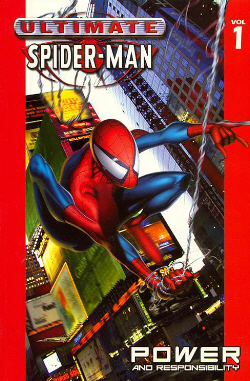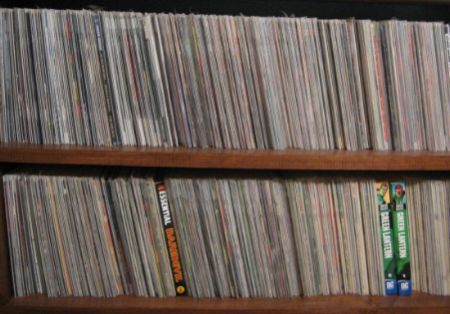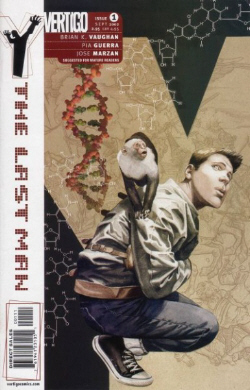A Manifesto Against Trade Paperbacks
By Patrick Bérubé
June 1, 2009 - 05:00
In the last few months, I have read many articles about the lasting debate of reading comic books in their monthly format (aka pamphlets or floppies) or in their collected trade paperback (aka TPB) form. Most of these articles were in favour of the ''wait for the trade'' attitude, citing arguments such as price, availability and the format itself. Even if I have to agree with some of these arguments, I'm definitely leaning toward the monthly installment and here is why.
TPB (trade paperback) vs. OGN (original graphic novel)
As good as it is, it is not a graphic novel!
First of all, let's clarify something. A trade paperback is a collected edition of some previously published material, while an original graphic novel is something not previously published and is intended to be read as a whole. Many publishers do tend to use the term graphic novel on almost everything now mainly because it just looks more prestigious and serious, but this difference is, in my mind, fundamental in this debate since both are different in nature. And if I abhor the former, I particularly appreciate the latter. So don't accuse me after reading this article of condemning both.
The arguments in favor of the TPB
Most of the arguments in favor of the TPB are solid but, with some exceptions, are mainly points of view and could be easily overturned.
The first argument that often pops up is the price. I have to admit that sometimes, if you look at the cover price of a trade paperback you could feel like you had been robbed if you bought the same comic books in it's monthly format. Especially if the publisher drops the price on the first volume to get new readers, like it was the case with Northlander Volume 1 from Vertigo Comics. With an introductory price of $9.99 for the collected 8 issues, it's a real bargain compared to the $23.92 ($2.99 x8) I had to pay for the same eight single issues. However, this is an exception and most publishers list their trade paperback between $14.99 and $18.99 for a six issues collection, which is almost the same price you would pay for the monthly format. Amazon offers discount on books? Well, so do most retailers when you subscribe to a pull list service. And if you are willing to wait a bit longer, single issues cost a fraction of the cost when they end up in the back issue bin (or on eBay). Selection is not always diversified, but it's a great place to discover and try new stuff.
Another argument is that the trade paperback format is more durable, it looks better on a shelf and essentially contains a whole story. For the durability, comic shops often offer bags and board for a couple of pennies that will make sure your comic book remains intact. It can't stand on a shelf? Yes it can, as you can see of in a picture of mine. It doesn't look good as a TPB? Luckily I buy my comic books to read them and not to put them on display. It creates a cover roll when comics are stored in a long box or on a shelf? Why do you care if you are not a collector anyway? And as for the TPB containing a whole story, it might be true but it's often not self-contained and you have to read a couple of other volumes to understand what's going on, especially with major publishers' super-hero titles.
 |
There is also another argument that may not be an argument at all but is worth mentioning. American readers might not notice it, but if you go to Europe or elsewhere and ask a comic book reader about American comics they will be quick to point out that the format which is quite different from what is done in other countries. This is a uniqueness that might not be fully exploited by publishers and that holds a significant cultural importance. I'm not saying we should only stick to the monthly format but we should at least try to use its strengths and market it properly. After all, if you compare the page/price ratio, American comics are notoriously cheaper and, more and more often, better than their mainstream European counterparts.
 |
| This series was, in my mind, meant to be read monthly |
Even if my opinion seems pretty clear I sometimes buy trade paperbacks too. I prefer the pamphlet, but I can agree that the TPB has some advantageous qualities, like the availability. I just felt here that I needed to defend my preference since everyone seems to think that the pamphlet is a relic of the past and that it is doomed. I prefer to believe that if properly used, the monthly format can be very entertaining and exciting.
I also would add that I did not take the business model into consideration here. I'm a reader, not a dealer.
Related Articles:
DC: The New Frontier Trade-Paperback Review
Diablo House trade paperback comics review
Clue (Trade Paperback) comics review
Shadowman Vol. 1: Birth Rites TPB is Valiant’s Next $9.99 Trade Paperback
Whore Trade Paperback review
A Liitle Majak, Next Man Trade Paperback, Mickey Artwork : Comici Update
Explosive Tradepaperbacks
Aladdin: Legacy of the lost trade paperback available in july
A Manifesto Against Trade Paperbacks
RUNNERS TRADE PAPERBACK AVAILABLE FOR PRE-ORDER NOW
